Henderson Island: the Pacific paradise groaning under 18 tonnes of plastic waste
By Andrea Vance & Iain McGregor for Stuff From The Guardian

Rubbish has been washing up on its isolated beaches in the Pitcairn chain at a rate of several thousand bits of plastic a day
Henderson Island, uninhabited and a day’s sea crossing from the nearest sign of civilisation, should be an untouched paradise.
Instead its beaches, which were awarded Unesco world heritage status in 1988, are a monument to humanity’s destructive, disposable culture.
Along a 2.5km stretch of sandy beach, an estimated 18 tonnes of plastic has accumulated over decades at a rate of several thousand pieces of plastic every day.
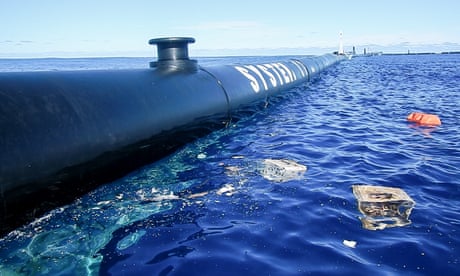

Because of its isolation in the Pacific, little is known about the island and the origins of the rubbish that gathers around it. So in June, a team of scientists, conservationists and two journalists from New Zealand’s Stuff.co.nz spent two weeks collecting six tonnes of the rubbish to gain more insight.
Henderson Island is a speck of land deep in the southern Pacific Ocean, part of the Pitcairn Island chain. It lies in the world’s third-largest marine protected area, so commercial fishing and seafloor mining are illegal. With swaying coconut trees, pink-tinged sand and turquoise waters breaking over a coral reef, it is an important sanctuary for breeding seabirds and home to four endemic land birds: a fruit dove, lorikeet, reed warbler and the plucky flightless crake. The atoll lies low in the Pacific, almost 10km long and 5km wide.
Much of the debris drifts ashore on East Beach, bordered by an unforgiving coral reef and prone to strong winds, making access feasible only via a 75-minute, 5km hike through dense vegetation and craggy and slippery coral.


The clean-up started with marine conservationist Johnny Briggs measuring out a stretch of sand using his running app. The first task was to remove all the fishing buoys from that area.
In total, 1,200 were gathered.
Next come the larger pieces of rigid plastic. Containers, water bottles, laundry hampers, and toilet seats are crammed into sacks. Anything larger than a bottle cap is picked up.
“It takes a lot of time on your hands and knees just shuffling through to grab it all,” US environmentalist Brett Howell, who leads the clean-up, says. “You certainly feel more impactful when you are going after the buoys and the big stuff because you really see the difference.”
On alternate days, rigorous data-gathering techniques are used. Every item is counted, catalogued, weighed and recorded by Briggs and British recycling expert James Beard so scientists can compare the data with that collected in 2015.
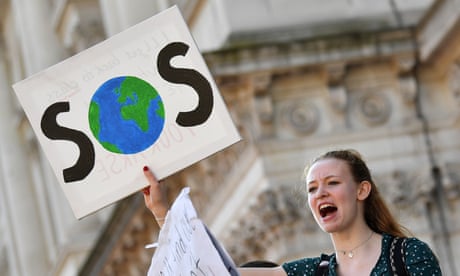

Before the long trek back, the end of each day is marked with a photo. “It is so rewarding to see the progress … you can see that there is a real difference in how the beach looks,” Beard says.
Despite the protection afforded to the region, the team estimates 60% of what they pick up appears to be associated with industrial fishing.
Fishing buoys totalled about 40% of the weight, while rope and nets made up 20%. There were also about a dozen fish-aggregation devices (FADs), rudimentary rafts with netting that could hang as deep as 100 metres below the surface. A satellite-linked buoy relayed the location to a fishing vessel. Some came to shore even as the clean-up team worked.
Since fishing is banned in the 830,000 sq km sanctuary, New Zealand police and the British government are now investigating the FADs found by the clean-up team, with a view to prosecuting the owners.


In 2012, the Pitcairn council voted to create the marine reserve, but is powerless to stop wave after wave of plastic junk washing on to Henderson’s shores.Advertisement
The rubbish is carried there on the powerful South Pacific Gyre, a giant current that moves anti-clockwise across the ocean.
It is believed that most of the plastic is from South America or from passing ships. But the team found spirits bottled in Japan, Scotland and Puerto Rico; a rubber boot manufactured in the Netherlands; and a hard hat from the United States.
Everyday household items covered the beach: laundry baskets, toilet seats, razors, toothbrushes and dozens of shoe laces.
On a 600-metre stretch of sand, the team counted 909 bottle tops. The separation of the caps bothers recycling expert Beard. What happened to the rest of the bottle?
“My guess at this point is that the PET [polyethylene terephthalate] is heavier than the plastic lids … and they sink,” he says. “So, for every bottle top we are finding there is a bottle somewhere out in the ocean that has sunk to the bottom.”
One container, 500 dead animals
As well as being unsightly, the litter can be deadly. Single-use plastics are often found in the stomachs of dead sea birds and whales. Other marine creatures become fatally ensnared.
Hermit crabs climb into plastic containers, become trapped and starve to death in the hot sun. The decaying stench attracts other crabs, who also perish. One pesticide container upturned on the beach held the corpses of 500 creatures.Advertisement
Plastics break down and end up as microplastics, defined as items less than 5mm in diameter, and nanoplastics (less than 0.001mm), which end up in the food chain.
Although the crew remove all visible junk, most of the pollution lies hidden, disintegrating on the shoreline, with an estimated 2,000 tiny items per square metre.
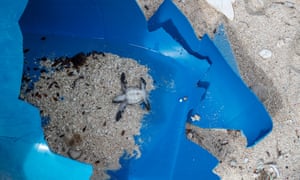

The oceanographer Simeon Archer-Rand, from Britain’s Centre for Environment Fisheries and Aquaculture Science, searched for seabed litter. His underwater camera captured 4,000 images that were analysed to track how the junk might have moved on the tides and its effect on marine life.
He also took samples from the beach and will coat minuscule plastic particles – some as thin as a human hair – with a red stain that will make them visible under ultraviolet light, to allow for counting.
The weather worsened over the course of the expedition, and so the clean-up team was forced to leave the collected rubbish on the beach. Only some samples for research were removed. The rest now sits in 13 collection stations, dragged up past the high-tide mark and piled in the beach scrub.
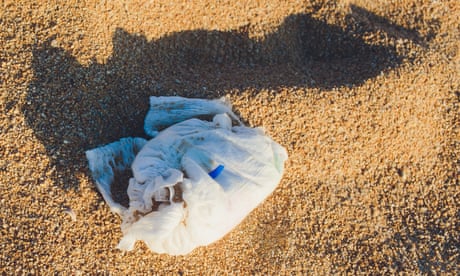

Another 14 large pieces of plastic were deliberately left on the beach, so four digital cameras could track what happens to them.
Pitcairn’s deputy governor, Robin Shackell, and beach clean-up leader Brett Howell, were looking at options to move the rest of the rubbish.
In time, Howell hopes it can be shipped to Costa Rica and transformed into a low-cost housing material. The non-recyclable plastic is heated and crushed into lightweight fine particles called aggregate that is then added to concrete.
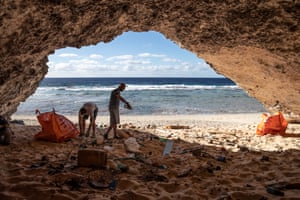

Howell says Henderson’s pollution is a stark reminder that plastic waste never truly disappears. To solve the problem, and keep debris from the oceans, there must be a change in how consumers use plastic, which is currently treated as a cheap commodity, to be thrown away after a single use.
“If this isn’t a wake-up call that we need to change our global supply chains, get to a circular economy, I don’t know what is.”
- This is an edited version of a full article published by Stuff.co.nz.
As the crisis escalates…
… in our natural world, we refuse to turn away from the climate catastrophe and species extinction. For The Guardian, reporting on the environment is a priority. We give reporting on climate, nature and pollution the prominence it deserves, stories which often go unreported by others in the media. At this pivotal time for our species and our planet, we are determined to inform readers about threats, consequences and solutions based on scientific facts, not political prejudice or business interests.
More people are reading and supporting The Guardian’s independent, investigative journalism than ever before. And unlike many news organisations, we have chosen an approach that allows us to keep our journalism accessible to all, regardless of where they live or what they can afford. But we need your ongoing support to keep working as we do.
The Guardian will engage with the most critical issues of our time – from the escalating climate catastrophe to widespread inequality to the influence of big tech on our lives. At a time when factual information is a necessity, we believe that each of us, around the world, deserves access to accurate reporting with integrity at its heart.
Our editorial independence means we set our own agenda and voice our own opinions. Guardian journalism is free from commercial and political bias and not influenced by billionaire owners or shareholders. This means we can give a voice to those less heard, explore where others turn away, and rigorously challenge those in power.
We need your support to keep delivering quality journalism, to maintain our openness and to protect our precious independence. Every reader contribution, big or small, is so valuable. Support The Guardian from as little as $1 – and it only takes a minute. Thank you.
For more on this story, video and to donate go to: https://www.theguardian.com/environment/2019/jul/30/henderson-island-the-pacific-paradise-groaning-under-18-tonnes-of-plastic-waste




